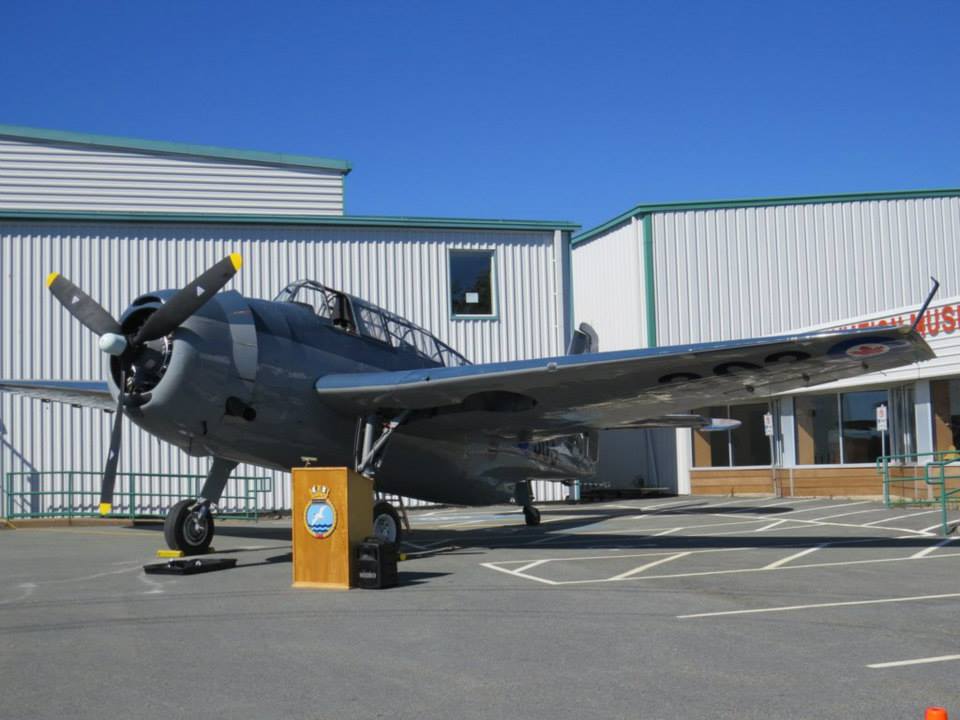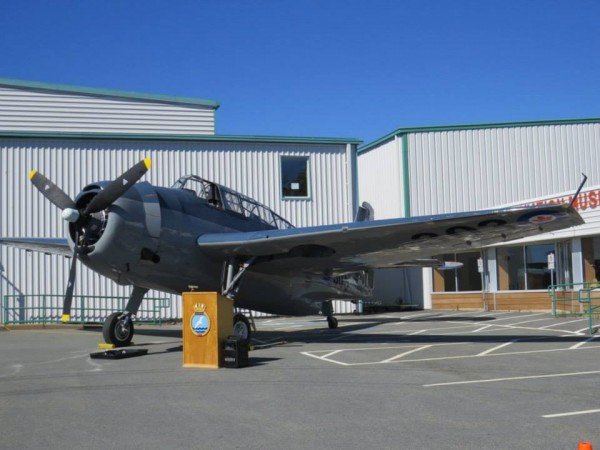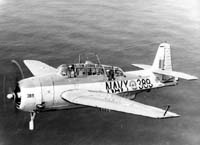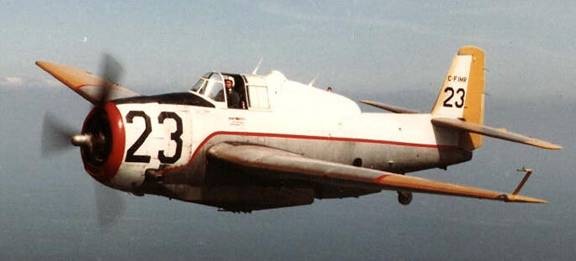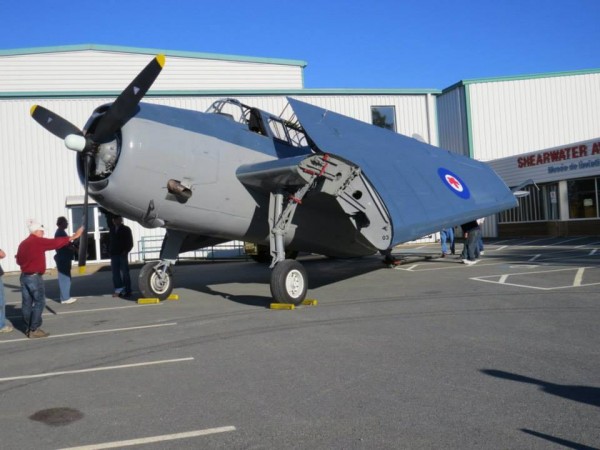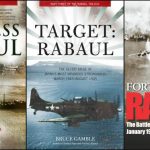The Shearwater Aviation Museum on 3 October 2013 presented the newly restored Grumman TBM Avenger. This particular torpedo bomber it has been used to bomb forests in New Brunswick with water. Tanker 23/NAVY 303 was of 125 US Navy Grumman TBM-3E Avenger’s were taken on strength with the Royal Canadian Navy (RCN) in two batches: 75 in the spring of 1950 and the remainder in the summer of 1952.The Avenger was selected to replace the British Fairey Firefly and marked the change in RCN policy of procuring American vice British aircraft.
Only several months after taking delivery of their TBM-3E Avengers in May 1950, the Royal Canadian Navy (RCN) embarked on a program to modify the aircraft for the specialized anti-submarine role that the RCN had assumed under the 1949 NATO accord. A total of 98 Avengers were modified to the anti-submarine version, designated as AS 3’s, making it the most numerous variant. The most obvious change incorporated in the modification program was the removal of the TBM-3E’s ball turret and the rearward extension of the glass canopy. The modified Avenger AS 3’s were also repainted in the current official RCN paint scheme, the last and most common being Gloss Dark Gray over the upper third of the fuselage and upper surfaces of the wings and tailplanes while the remainder of the aircraft was painted Gloss Light Gray. In addition to the Pilot, the AS 3’s were crewed by an Observer and an Observer’s Mate who operated the submarine detection equipment which included radar, electronic counter measure and sonobuoy systems; a later version, the Avenger AS 3M, added a Magnetic Anomaly Detection (MAD) system. The Avenger AS 3’s and their subsequent variants were flown from the air station HMCS Shearwater and the aircraft carrier HMCS Magnificent until officially retired in July 1960.
Tanker 23/NAVY 303 was delivered to Royal Canadian Navy as 53610 in 1950 ,on March 6, 1958 it was sold to Wheeler Airlines, St. Jean, Quebec and registered as CF-IMR. The aircraft was operated by what it became Wheeler Northland Airways until 1970. Evergreen Air Service Lt of Roxboro, Quebec operated the airplane from 1972 until 1976. IN 1976 Forest Protection Ltd of Fredericton, New Brunswick flew it as tanker 23.
In 2012 the Shearwater Aviation Museum foundation bought the last of the airplanes back, and returned it to it’s original look as a navy plane. Although the airplane is fully operational the museum at the moment doesn’t have any plan to actually fly it. “The plane was flown from New Brunswick last year and the museum plans to keep the plane operational. But it likes to burn fuel,It burns 95 gallons an hour.So you have to have deep pockets. There’s not too many of these flying.” says Christine Hines, the Curator at the museum.
The airplane is now on display at the Shearwater Aviation Museum, for more pictures you can check the museum’s Facebook page.







